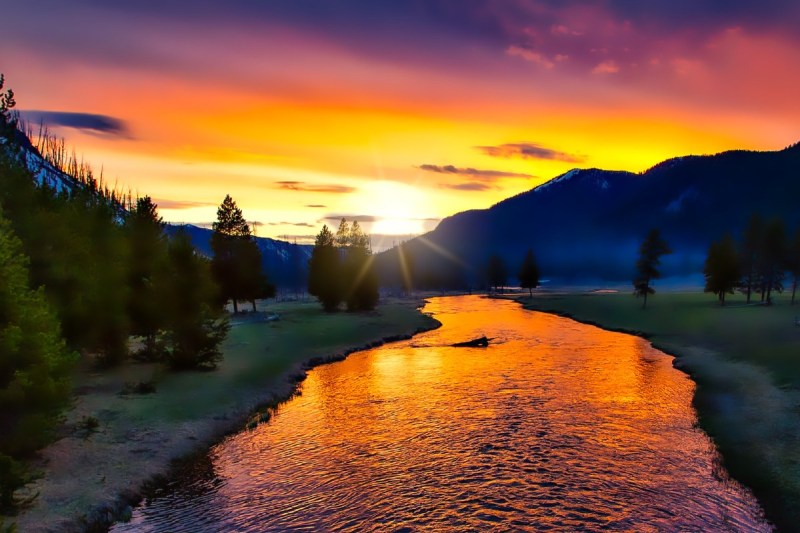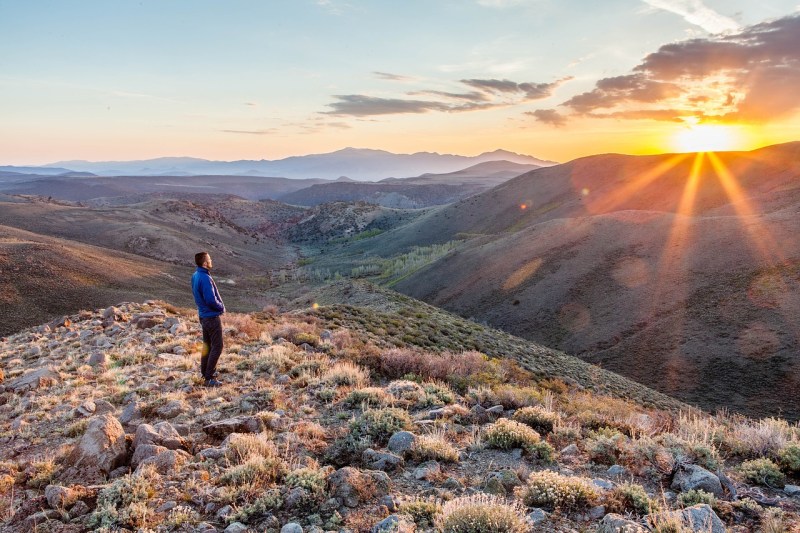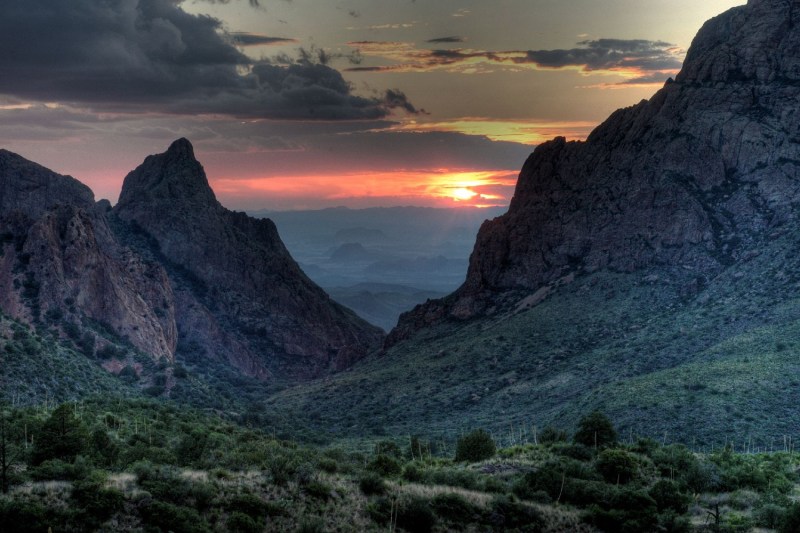Hitting the trail after sunset might seem counterintuitive, but there are plenty of reasons to take a moonlit trek. A night hike can be a uniquely engaging sensory experience, making even the most familiar trail feel like a novel exploration. And, hiking beneath starry skies provides plenty of opportunities to admire the cosmos and perfect your night photography skills. In the wilderness, there’s also a good chance you will encounter nocturnal or crepuscular critters, like dive-bombing bats, browsing porcupines, or elusive bobcats. There are practical reasons to go night hiking, too. Setting out after sunset is a way to escape the heat and dodge crowds on popular trails. During a busy week, a night hike can even become a much-needed microadventure and provide a way to mix up your standard routine.
Adjusting to the Darkness
While humans don’t have the night vision capabilities of crepuscular or nocturnal critters like raccoons, opossums, or mountain lions, our eyes will eventually adjust to the lack of light -- it just takes a little time. First of all, our pupils dilate within the first few minutes of being exposed to low-light conditions. But, more importantly, rods, the cells in our eyes that help us see in the dark, require a chemical known as rhodopsin to begin functioning.
The body, however, only begins producing rhodopsin after low levels of light have been detected for about half an hour. So, before starting your night hike, allow enough time for your natural night vision to take over. And remember, even just a few seconds of exposure to light will undo your natural night vision, meaning your body will have to adjust all over again, so try to use your headlamp as little as possible.

What to Bring
Just like any hike, bring along the usual trail staples -- water, snacks, navigational tools, and a first-aid kit. Be sure to bring extra layers to combat cooler temperatures, including a hat and gloves.
To allow your natural night vision to take over, bring your best adventure headlamp with a red light setting. Because red light has longer wavelengths, rhodopsin is not as reactive to it, as compared to the standard white light on a headlamp. And, don’t forget to pack extra batteries, just in case you spend more time on the trail than planned or get disoriented in the dark.
Consider bringing a few extra items to enrich your night hiking experience, like tasty hiking snacks, or a thermos of coffee or hot cocoa. And, to fully take advantage of opportunities to admire the cosmos as you hike, pack a sky map and a pair of binoculars for stargazing.

Staying Safe on the Trail
Begin with a familiar trail, or route that’s easy to follow, and avoid terrain with potential hazards that would be tricky to tackle in the dark -- like river crossings, precipitous cliff ledges lines, or dense, root-knotted forests that obscure views of the sky. And, while still getting used to trekking by moonlight, choose landscapes that are also easy to navigate, like expansive meadows or stretches of sandy coastline. Forest roads with minimal traffic can also be an easily accessible option for night hikers.
For the first few outings after sunset, bring along a hiking buddy, or go in a group. And, be sure to let someone at home know your travel plans. Forget about setting any speed records. When planning your first few night hikes, don’t worry about mileage, or reaching a specific destination, just take some time to get used to navigating in the dark. Slow down and appreciate the experience, stop to listen for roving wildlife, admire the aesthetics of the landscape in the moonlight, and keep an eye on the cosmos for shooting stars.
Be sure to consider the local critters in your region. While night hiking provides an opportunity to encounter engaging creatures of the night, from swift-winged barred owls to vocalizing coyotes, be mindful of moonlit encounters as some creatures -- especially predators -- can behave differently after sundown. And, in the dark, it can be easy to inadvertently startle animals along the trail.
To make navigating after sunset easier, pay attention to the weather and the phases of the moon, and plan your night hike on a clear night when the moon is full. And, if you’re not quite ready for a starry-skied adventure, ease into night hiking with a few short treks in lower light conditions, either at dusk or dawn, when trails are also usually less busy. For starters, consider planning a few short outings that coincide with sunrise or sunset.

Where to Go
First things first, when choosing a night hiking destination, be sure to pick a location where trail use is permitted after sunset. Many state and national parks offer guided night hikes for stargazers, which can provide an opportunity to get some experience
Consider planning a short night hike on your next camping or backpacking trip. For car campers, an extended, starlit stroll around your campground can be an ideal way to ease into longer night hikes. And, for backpackers, consider planning a night hike on your next outing -- especially if you’ll be camping in terrain that is prime for exploring after sundown.
And, for optimal stargazing, think about exploring one of the locations designated as International Dark Sky Places by the International Dark-Sky Association (IDA). The Arizona-based non-profit is dedicated to preserving the night sky and reducing light pollution and has recognized more than 130 different International Dark Sky Places around the world.
A number of America’s national parks also offer epic night hiking experiences. In the West, Utah’s Bryce Canyon National Park offers monthly full moon hikes, and in California, Death Valley National Park is one of the country’s premier stargazing spots, designated as a Gold Tier Dark Sky Park by the International Dark Sky Association -- and for night hikers, the Mesquite Flat Sand Dunes are an ideal area to explore after sunset. East of the Mississippi River, in Virginia’s Shenandoah National Park, the Big Meadows Campground is perched just across from one of the protected area’s top stargazing spots -- the expansive, trail-etched grassland aptly titled Big Meadows.
Further south in North Carolina, on the string of barrier islands known as the Outer Banks, the Hatteras National Seashore’s Frisco Campground offers campsites nestled in the scruffy sand dunes, just steps from the beach. And, for nighttime strolls, the statewide Mountains-to-Sea Trail traverses the national seashore.
Night hiking doesn't have to be an intimidating experience, and once you have all your best outdoor gear dialed in, it can be really enjoyable. Find a friend who's up for the adventure and go enjoy yourself! There's nothing like
Editors' Recommendations
- All 2023-2024 Burton snowboards are now available – here’s everything you need to know
- What is REI Co-Op? Everything you need to know about REI’s in-house gear brand
- The 6 Best Day Hikes in U.S. National Parks
- The Best Hiking Snacks To Fuel Your Time on the Trail
- What You Need to Know About Road Biking: A Beginner’s Guide


